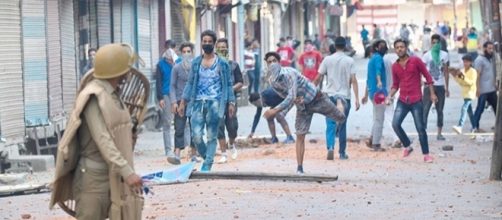It has been six decades, and Kashmir has been under siege for so long that the world is slowly forgetting about it. It all started back in 1947 during the Pakistan-India separation. This region was still undecided; however, being a Muslim majority, their Hindu Maharaja at that time sided with India in fear of the Pakistanis. That mistake has cost thousands of lives.
The takeover
Back in 1991, Kashmir was under siege from India and soldiers roamed the streets terrorizing towns. Gunfire muffled with chants of 'Azadi' (freedom) filled the air, and people from all parts of Kashmir protested against the Indian Rule.
JKLF or the Jammu Kashmir Liberation Foundation was the leader of this movement, who believed in an independent Kashmir state. The Indian forces rivaled these riots, trying to end them throughout the city and other parts of the country
In 1996, the JKLF broke the forces that had control over Srinagar and other major riot towns. A new group arose called the Hizb-ul-Mujahideen (HM), a pro-Pakistani group. During the past three to four years, the Indian forces have harshly put down rioters, hurting not only them but their families and loved ones which weakened the campaign and left people hopeless. Over time many of the Youth sided with the Indian Forces in fear of the same tragedies hitting their families.
Divided Kashmir
Pakistan had been providing aid and weapons to the rebel groups for a long time. However, when the JKLF started fighting against the HM for a sovereign state, Pakistan cut off aid to the JKLF and fully sided with HM. This began a war between the two, which India greatly favored from. Soon the 'Azadi' movement simmered down and hit the stacks.
The Fidayee
During 2001-2002, a group of suicide attacks alarmed the city when Indian militia camps and bases got targeted, killing over 200 soldiers, policemen, and perpetrators. These attacks were planned out by the Lashkar-e-Taiba (LeT), a religious organization based in Pakistan and led by Pakistanis.
The pro-Kashmiri insurgents lost over a thousand men in these attacks and soon were able to recruit local Kashmiris.
U.S. intervention
However, in 2002, General Pervez Musharaf came under U.S. pressure to remove Pakistani military support from these Kashmir-based groups. The number of insurgents from Pakistan declined, the attacks ended, and everything backlashed. Even though these groups still exist in Kashmir, they are not related to any Pakistani intervention. By 2006, Kashmir Insurgency declined and peace started to prevail, which meant that nothing major outside the surface happened. Today, riots have trickled to a few and the Indian army is keeping an eye on the Kashmiri youth.
The Kashmiri youth
Since 2006, the Kashmiri youth have resorted to social media to voice their freedom, which is their main medium of communication in terms of staging riots or rebellions against the Indian army.
However, India is involved in these social media conversations in order to keep an eye on anything upsetting.
They capture people trying to organize rebellions and prevent any uprising by blocking or hiding information sent out by these social media accounts. This below-the-surface insurgency occurred due to the youth wanting to stay safe while they study in universities and get on with their normal lives. Most of them have resorted to being a part of Pakistan rather than an independent state, which is still fueled by anger as Pakistan has pulled its militant hand from the fight. However, support on the international front by Pakistani NGOs, individual groups, and political figures still rages on.
Back in 2008, many youth hit the streets after gathering on social media, and many since then, including stone-pelters who have sided with militant groups, have surfaced. These militants, merely in their mid-twenties but highly educated, have started walking this path due to the past tragedies of facing harassment or deaths of loved ones at the hands of the Indian militia.
Burhan Wani, a former militant head of the HM, started this new wave of Kashmir uprising by recruiting over a 100 militants, which continue to fight the Indian army's attacks. However, on July 8, 2016, at Kokernag, he was killed in a planned attack by the Indians, along with two other militants. Since then the anger among the Kashmiris has increased and their struggle strengthened.
The Kashmir conflict has had its setbacks as well as hopeful days. However, it's still unsafe to say when they might actually get their hands on freedom. Despite the self-rising youth of Kashmir knowing that the fate of this country rests in their hands, they still have a far way to go in order to gain independence from the Indian takeover.


